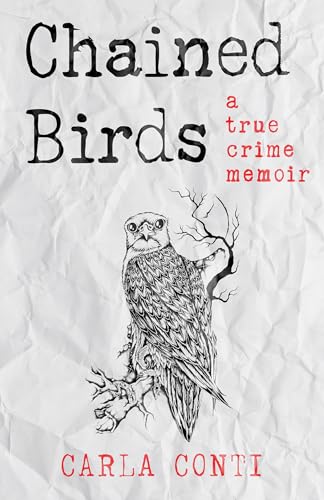(As I have mentioned in my previous two posts, I’ve been working on completing this new chapter of The Complete User’s Guide to the Amazing Amazon Kindle, and I have been blogging some of the content here the past few days. The chapter will focus on about a dozen possibilities for Kindle 2.0 and beyond – some may be exciting to some, and others to others. This is the third post. If you scroll down to the end of this post you will find links to the two earlier posts should you want to find them. Please feel free to weigh in with your own ideas in comment form).
A Big Tent for Kindle Content Availability on Other Devices
(and the Converse….)
One of the things that can make it fascinating to watch the way Amazon conducts business is that the company often confounds conventional expectations about its merchandising strategies. Just when it appears that Amazon is all about trying to sell one category of merchandise, they turn that appearance and its attendant assumptions on their heads with strategic moves aimed at maximizing sales in some other merchandise categories.
During the half decade following the company’s rather humble origins in 1994, Amazon built a reputation as a bookseller with great prices, great service, and very good selection. Then, beginning gradually in 1999, Amazon opened its big selling tent to thousands of other online booksellers from individuals selling out of their homes or garages to major book retailers like Powell’s and New York’s famous Strand Bookstore as well as countless other entities between these two extremes of scale. While some analysts, competitors, and potential Amazon Marketplace sellers wondered aloud (or in print) why Amazon would want to invite competitors inside its tent where they could “cannibalize” Amazon’s own sales even while they benefited from Amazon’s valuable website real estate, the fundamental underlying truth was that Amazon was showing its allegiance to its primary business principle of making money by optimizing its customers’ shopping experience in terms of selection, service, and price. Eventually it became clear to all concerned, as it was repeated again and again by Jeff Bezos and other Amazonians, that Amazon was just as happy to make money off a Marketplace seller’s sales as to make money off sales from its own warehouses. (For a much more thorough exposition of these developments and how they have come to affect the world of bookselling, see “The Bookselling Business: How We Got Here,” the second chapter of my full-length book Selling Used Books Online: The Complete Guide to Bookselling at Amazon’s Marketplace and Other Online Sites.)
I digress, but my point would be that, if we look at Amazon’s history and its “customer experience” mission, it shouldn’t surprise us to find that the company’s ultimate purpose, with the Kindle, may not be to sell Kindles. By launching the Kindle and pushing hard in the general direction of making the Kindle format the industry standard, Amazon guarantees that:
· we are turning the corner toward a world in which e-books and various other electronic formats for the printed word will become more and more prevalent;
· rather than be a print-on-paper dinosaur condemned to losing its dead-tree customers gradually to e-books and web-based reading, Amazon will be a major player, and very likely the leading player, on these evolving electronic terrains of publishing and bookselling; and
· Amazon will have a seat at the table, and tremendous influence with publishers as well as readers, in determining how various e-book publishing standards such as epub, .mobi, and .azw are positioned and which, if any, gains dominance.
To consider how this evolution will be visible in the context of future generations of Kindles or their natural offspring, it may not be too simplistic or reductive to think about two questions:
· first, when and whether Amazon will make it easy for Kindle owners to buy content for their Kindles from other sellers without having to jump through too many formatting and file-transferring hoops; and
· second, when and whether Amazon will make it easy for the owners of other e-book devices to buy Kindle edition books from Amazon for use on their Readius, iPhone, Sony e-Reader or other gadgets.
The first possibility, of course, is more than a possibility. Right from the start, it has been possible for Kindle owners to download tens of thousands of titles from free and paid websites and to use Amazon’s own file-formatting services, either free or for a dime a document, to transfer them to their Kindles. I have no doubt that Amazon pays attention to the extent to which its customers use their Kindles for these purposes, both in absolute terms and as a ratio against the number of Kindle editions that customers purchase and download directly from the Kindle store. Providing these and other ancillary benefits for Kindle owners makes the Kindle more marketable, and reduces the likelihood that customers will start reading books on some other device, so of course it makes good sense for Amazon as a business proposition. I further have no doubt that Amazon will remain alert to possibilities for ways to monetize its Kindle customers’ access to content other than Kindle editions, and might well open a revenue-sharing gateway into its Kindle Store tent for electronic files from other sellers. Of course, if an electronic file created outside of Amazon’s boundaries is sold to Kindle owners in Amazon’s Kindle store, it may be a distinction without a difference to call that file something other than a Kindle edition.
Once we imagine these possibilities, it becomes quite easy to imagine a relatively seamless world in which the owners of other e-book readers can shop in the Kindle store. I found it fascinating that during a presentation at the Spring 2008 BEA trade show, without even being asked, Jeff Bezos volunteered the possibility that Amazon might make Kindle edition books available for download to other devices. After about a decade of Bezos-watching for fun and profit, I can tell you with confidence that, despite his raucous laugh and seeming spontaneity, the Amazon CEO does not blurt things out, especially at forums such as the BEA.
So, let’s think about this. One of the Kindle’s initial missions has been to be a game-changing device that will make e-book reading an attractive choice for large and growing numbers of readers. We are not there yet, but we are getting there, and it is clear already that the Kindle is changing the game in ways that none of its predecessors could achieve. The combination of the device’s features, Amazon’s reach both with readers and with publishers, and Amazon’s relentless marketing commitment to the Kindle makes such change quite likely, if not inevitable.
Once the Kindle clears that hurdle, there will be more and more hardware competitors, but none of these hardware competitors is likely to possess Amazon’s reach or marketing power. Some of these competing devices will be every bit as cool as the Kindle, if not cooler. Others will have their own loyalists simply because they offer the convergence features that are desired by specific customers.
Why wouldn’t Amazon want to make its Kindle catalog available on these devices for the right price? If the company’s strategy runs true to form, Amazon will continue to push the Kindle but will also, eventually, be perfectly happy to be the bookseller for other electronic reading devices whose manufacturers seek entry under the big tent of the Kindle catalog.
Customer Experience: In addition to making more money for Amazon, this approach would also make more money for the publishers and authors who publish for the Kindle using either the Kindle’s .azw standard or the .mobi standard. Naturally, then, by making it easy for publishers and authors to access other electronic distribution channels simply by publishing for the Kindle, Amazon would be greatly enhancing the author and publisher benefit of Kindle publishing. This benefit, in turn, would help Amazon to come closer to its stated goal of making “every book ever published” available to Kindle readers, which would be pleasing to us as current Kindle owners and would also, in turn, help to expand the installed base of Kindles. What goes around comes around.
Likelihood of Adoption (on a scale of 1 to 10): 8. When Jeff speculates, I listen. Whether and when either of these developments occurs, of course, will depend on Amazon’s own notions about the effect of such changes on the Kindle brand, on Amazon’s net income, and on the company’s long-term vision of a world in which Amazon, through the Kindle and perhaps these other devices, is the company that provides readers with immediate electronic access to every book ever printed.
Shop the Amazon Store Through a Kindle Gateway
Here’s a conundrum for you. You know how easy it is to shop the Kindle Store from your Kindle? Pretty easy, right? (I suspect that most of us tend to do more of our Kindle shopping from our desktop or laptop computers, but that doesn’t mean that a significant amount of folding money doesn’t change hands in Kindle-based transactions).
So why doesn’t Amazon make it just as easy for Kindle owners to use their Kindles to shop the main Kindle store? Kindle owners are probably more likely than just about any other group of customers that Amazon can identify to be Amazon loyalists, early adopters, significant spenders, and avid readers. That, my friends, is what we would call a demographic Grand Slam. It is so obviously in Amazon’s interests to provide Kindle owners with a seamless Kindle-based gateway into all of the company’s many main-store departments that I am surprised I haven’t seen more discussion of this issue.
I got a chance to ask Jeff Bezos this question live on Tom Ashbrook’s On Point program on NPR, and he said that the reason Amazon had yet to open this gateway involved engineering obstacles. If they can’t fix this one soon, it’s time to hire some new engineers. This is money in the bank for Amazon.
Although Amazon has not wanted to release any information regarding Kindle sales, the company did offer a report, several months after the Kindle’s launch, to the effect that Kindle owners were buying more print-on-paper books than they had purchased before they had their Kindles. This seemed strange, but if it is true, then it would probably also be true that they would be likely to buy more gourmet coffee, shoes, electronics, and office supplies from Amazon too – especially if they could make some of those purchases directly on their Kindles.
Customer Experience: Frankly, this enhancement will probably be more of a win for Amazon than it will be for Kindle owners. For Amazon, it’s cash. For Kindle owners, it’s a minor convenience plus. But even though I don’t expect the Kindle to make my coffee (for a couple more years, anyway), what’s not to like about being able to order a case of gourmet coffee, a pair of shoes, or a new printer from my Kindle? For Kindle owners, we will know it is here when there’s a new line on the menu screen off the Home screen, right under “Shop in Kindle Store,” that reads “Shop in Amazon Store.”
Likelihood of Adoption (on a scale of 1 to 10): 10. Hey, if Jeff said it is only engineering, then it is only a matter of time.













